The defence and security podcast ‘The OSINT Bunker’ discussed the impact that the damage to HMS Prince of Wales will have on F-35B Shipborne Rolling Vertical Landing (SRVL) trials.
Rear Admiral Steve Moorhouse recently provided an update on the situation with HMS Prince of Wales, confirming what the UK Defence Journal was first to report.
Anyway, SRVL is a method used to land a jump-jet aircraft that uses both the vertical thrust from the jet engine and the lift from the wings.
A Short Takeoff or Vertical Landing (STOVL) aircraft normally either lands vertically or it makes a conventional runway landing. For a vertical landing, it uses downward thrust from the lift fan, while for a runway landing, the jet nozzle is pointed rearward. With a rolling vertical landing, the aircraft uses downward jet thrust to hover while it is still moving fast enough to generate wing lift. This allows for a rolling landing with a significantly reduced approach speed and landing distance.
The video below shows how it’s done with previous trials onboard HMS Queen Elizabeth.
With an SRVL manoeuvre, a STOVL aircraft can make a rolling landing on an aircraft carrier and come to an effective stop with the disc brakes in the landing gear. Unlike a conventional rolling landing on a carrier, this does not require the use of an arrestor wire and tailhook. The operational advantage of this technique is that it can increase the landing payload capacity, which can be restricted when it lands vertically. It can also reduce the level of wear on the lift engines and extend their operational life. Similarly, it can reduce the amount of wear upon the deck surface of a carrier caused by the downward jet exhaust from vertical landings.
The delay in the vessel deploying, of course, means a delay in the trials. You can read more about the Bedford Array at the excellent NavyLookout here.
Host @DefenceGeek said:
“It has a major effect on the deployment. For those not aware, Prince of Wales was on route to the Westlant22 deployment off the US east coast, where the carrier was due to carry out a number of air exercises and training and testing evaluation programmes, which I believe were due to be centred around the use of unmanned aerial vehicles. And obviously, the F-35B. Obviously, with this major issue, the ship will not be deploying for the foreseeable future.
And that obviously poses issues for the entire carrier deployability of the Royal Navy, as absolutely, you only have two carriers now, which means that if one, as is the case at the minute, is broken down. And the other one is prepping for actual combat deployment, we’ve got nothing for training or anything like that. An issue that obviously was reduced back with the invincible class when we had three carriers. So we could afford to have one in drydock, one on training and one actually deployed operationally.”
Their guest, our editor, George Allison, responded in agreement.
“Even in this case, having two carriers doesn’t make a difference. One of the things that Prince of Wales was to do was to conduct more Shipborne Rolling Vertical Landing with F-35Bs. She’s only one of the two carriers fitted with the Bedford Array that would have made those new trials possible. So Queen Elizabeth cannot do it. Even if the vessel would have been able to deploy, there would be no real value other than the, you know, political image of sending a ship but it would be largely pointless.”
You can listen for yourself by clicking here.
George even ended up on ITV talking about this.
I was on @itvnews tonight talking about the impact HMS Prince of Wales breaking down could have on the Royal Navy. pic.twitter.com/lNdm1mQ5fz
— George Allison (@geoallison) August 29, 2022
What is the OSINT Bunker?
The OSINT Bunker is a defence and security-based podcast aimed at expanding people’s knowledge of the geopolitical landscape using open-source intelligence. It fills a niche that most people (most people reading this anyway) have for up-to-date, accurate and balanced information on ongoing conflicts.
What is OSINT? For those who don’t know, OSINT stands for open-source intelligence, which refers to any information gathered from public sources about an organisation, event, individual etc. In practice, that tends to mean information found on the internet, but technically any public information falls into the category of OSINT, whether it’s books or reports in a public library, articles in a newspaper or statements in a press release.
Episodes typically cover the UK and international defence matters.




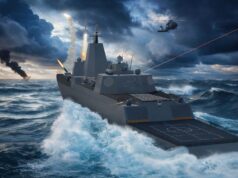
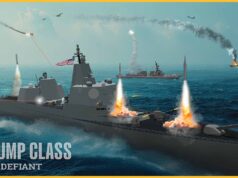
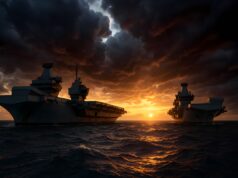
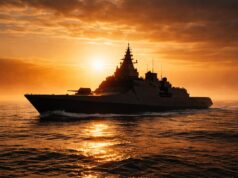


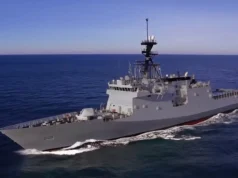
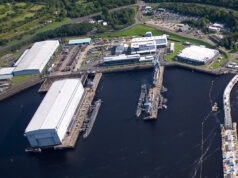


One of the things that Prince of Wales was to do was to conduct Shipborne Rolling Vertical Landing with F-35Bs. She’s only one of the two carriers fitted with the Bedford Array that would have made those trials possible. So Queen Elizabeth cannot do it.
Interesting, What is the other with Bedford Array? USN, Marines LHA, Cavour?
I wonder if there’s a missing “the” in the statement and it’s suppoosed to say She’s the only one of the two carriers fitted with the Bedford Array…
Illustrious had an early version, I believe.
Turns out that the RN bet wrong when putting it only on the Prince of Wales at this point.
Presume a Bedford Array is planned for installation on HMS QE at some point?
Maybe I’m reading too much into it but perhaps SRVL is going to become the preferred recovery method on the QE class. The priority was to get HMS QE into service using VL them use the HMS PoW to further develop the SVRL operations by the sound of things. Anyway watching the video of the SRVL never gets old 😀
I think you are reading this right.
Get things working and then optimise them is the lower risk strategy.
Presumably there were some flight rules that needed sorting that prevent HMS QE having it from build. Bear in mind that QE was pretty much built by the time that F35B was in advanced testing.
From what I’ve read, HMS QNLZ has the light systems of the array (they call it the “SRVL Array these days, poor Bedford…), but they’re not gyro stabilised, so a lot more limited than the system on HMS PWLS (Apparently the more intuitive PoW as a shortened version isn’t poular for some reason? 🙃). Apparently, assuming positive results from these trials, the fully stabilised array will be added to QNLZ at her next refit. No idea when that is…
It is planned to be installed on QE at her first major refit.
Were USMC F-35s also going to be trialling SRVL? If not, surely this aspect of the delay isn’t going to affect much. And does it really need a carrier to launch Banshee drones? I’d have thought exercises with the US and Canadian forces and the possible cancellation of Atlantic Future Forum 22 are bigger issues.
Interesting question. Any USMC F-35B squadron slated to deploy on QE class would practice SRVL, if that becomes a standard technique. The operational mantra would undoubtedly emphasize seamless integration (train, deploy, fight as a single cohesive unit).
Maybe, maybe not.
SVRL can’t be done on the Gator flat tops as there is no space.
But I agree it would make sense to have everyone doing the same thing seamlessly.
Pre-deploynent and/or simulator based training?
In short the USMC has no plans for SRVL. The Wasp and America Class will not be equipped for it with Bedford/SRVL array. They do have JPALS however.
The software developed for SRVL will be available to them, however without regularly training it and using it I suspect it will not be used by them.
Agreed, no plans for an organic capability, however, when in Rome…
Tell you what got to live the British Media
The Sun calls PoW a “cursed” ship.
If only we coulda put a ski-ramp on ocean.
Alright, time for an uninformed question: Would it be reasonable to consider STOBAR conversion of QE class, as an interim measure in addition to SRVL, on a potential path to full conversion after EMALS proves out, during a preplanned deep maintenance cycle? 🤔Would presumably permit recovery of fully loaded a/c. Understand there would be cost and schedule implications.
I would imagine you would need the F35C or similar with its uprated landing gear for arrested landings. Personally I think they should build a navalised version of Tempest, if it ever gets off the ground. I can’t see the F35b going on for 50 years. EMALS is already being looked into for launching drones with the weight of a Typhoon fighter from our carriers. Drones may become the only aviation onboard. Who knows.
Yes, UAVs/drones may eventually replace flight crews, but I can categorically state pilots have a helluva strong union w/in USAF and presumably USN, which will vigorously resist eviction from cockpit. They firmly believe it is indeed their AF, and everyone else should sit down, shut up and color. Similar viewpoint w)in RAF/RN?
I don’t understand why we never added traps, yes EMALS was underdevelopment at the time we built he QE class but arrestor gear is well developed.
Boeing are testing STOBAR with Hornets for the Indian Navy with a ski jump so its possible. It would have given us options on AEW and if sailing as a combined carrier group with a USN carrier some ability to recover US aircraft if the US carrier was damaged. I guess the original thinking was we’d operate closer to the USMC who also use the F35B.
Thanks, you presented the rationale behind my question better than I did. Just not certain how viable the logic is/could be.
More likely arresting gear would be added for hybrid operations, so drones like the Bayraktar Kizilelma could be operated STOBAR, while F-35B would continue to operate V/STOL.
STOBAR operations for the fighters are slower and more expensive than V/STOL. It’s the worst of both worlds. Conveting to full CATOBAR operations would involve a deck rebuild and retraining and certifying all pilots and a significant number of deck crew, so forget slipping it in during a maintenance cycle.
Then there’s the cost of buying the US EMALS/AAG system. France is reportedly paying $1.3bn to equip the PANG, so you’d have to figure we’d be paying twice that for two carriers.
MacTaggart Scott build arresting gear, and the opportunity is still there for Britain to develop EM-CAT (perhaps in conjunction with India), but we don’t have the will.
It is the crazy ongoing costs of the certifying, re-qualifying/certifying the pilots and the inability to quickly transfer ground certified F35B pilots quickly to QEC that is the killer.
In Corporate RAF Harrier pilots were deck certified rather quickly! In time of war you could transfer from land to sea in a couple of weeks in an F35B but an F35C – think 6 months + to do it properly.
So, personally, I think F35B is the right way to go for now.
The only thing I regret is the AEW aspect and that will be a drone based solution possibly with a catapult and maybe with an arrestor system.
I agree, but AEW could have been handled a lot better if we hadn’t chosen the cheapest possible interim solution (which turned out not so cheap after all, as is always the way with these things).
If we can’t buy/develop tiltrotors, I would go for a couple of escort flattops for UAVs. Good for AEW, loyal wingman, tanking and could be used either with a CSG or a LRG. We could make them a flex of the MRSS.
Simply speculating about future-proofing/preserving options for QE class during a hypothetical mid-life refit.
The RN has already put out an RFI to industry for a light EMALS system suitable for launching and recovering UAVs. Given the weight characteristics in that, it’d be suitable potentially for an MQ-25, but not for an F-35.
There’s big debate as to how possible it would be to convert to full CATOBAR, even on a deep refit, because of how far the design developed after the decision to go STOVL. But I think a move to STOBAR might be sufficient for the life of the carrier. F-35B can launch at full fuel and weapons load from the ramp, as power/weight ratio with modern engines is that good, I’d expect any potential replacement (tempest?) or loyal wingman to have equal or better. If so, is the added complication of Cats truly necessary? I realise it gives greater margin for ops, but that’s at the cost of increased maintenance and training requirements. I don’t know the answer, just wondering.
I think the B will be around longer than any other F35, the USN and USAF already have next gen programs but there’s nothing in the pipe for the F35B. We could see it evolve on its own path in 10-15 years. Like AV8B a revamp could see newer materials and other technology from 6th gen designs used in a revamped F35B. Engine upgrades are one obvious improvement but I would think even today RR could come up with a lighter and possibly smaller lift fan design if call upon to do so.
Yes, you’re probably right- anything with no direct replacement often ends up serving rather longer than everything else!
I read a report saying that they’re already looking at 6th GEN engine tech upgrades for the F-35 (althoguh not B-model yet), so your prediciton is beginning to come true already. I agree, RR could probably get it done- just a question of whether the combined buying power of all the global B-model operators can afford it…
Vaguely remember RR was developing an alternative engine(s) for F-35 program, but effort was defunded w/out explanation?
RR and GE were codeveloping an engine alternative but due to the F35 program being over budget and I suspect some talented lobbying by P&W the funding was pulled, GE and RR continued to fund development for another year but with no interest dropped the development. From here on I think the B will stay with the P&W engine, I think there’s enough Bs to justify P&W providing some enhancements.
Watson, I suspect skullduggery in the funding process. Come, the game is afoot…🤔😎
If RN indeed invests in a limited EMALS (light) at some future time, wonder whether there will be a continuing commentary and critique re non-selection of a full, robust version? 🤔
Haha, of course they will- the armed forces are always damned if they do and damned if they don’t in the eyes of the press!
It’s a tough one to call, but I personally think that it’s the right balance to make for the reasons that I put above. Future combat aircraft should have the thrust to weight ratio to run STOBAR ops if they’re not STO/VL, and what the RN carrier groups really need is persistent AEW (I think that Crowsnest should be replaced by a fixed wing UAV) and A-A Refuelling capability (again a UAV), which would be what benefits from a light EMALS solution.
In my head at least, I’m sure that a military expert could give me a long list of reasons why that wouldn’t work!
For what it’s worth, I hope and believe you are on the right track.
UK dropped FFBNW for cats and traps. Would cost huge money to add this in, and it would take a carrier out of service for ages, for a marginal benefit.
I’m still wondering how the damage happened. I mean it’s not like the RN hasn’t used the port before. Maybe a survey update is required.
Poor driving I’d hazard a guess, who was it?
Well why worry we dont have the jets to serve onboard anyway. Thats a long way off in the far distant future for these vessels. Far better keep matters simple and stick with RN Man and USMC fly, works best. And the Yanks will pay for their running. win win win
At least it stops them rolling off the deck into the sea!
🐒💩
Going back a few years, wasn’t there at one time a consideration to extended the larger of the dry docks at Portsmouth, D?, so these new aircraft carriers could dry dock at their home port as its predecessor could.
Is past penny pinching now hindering the new carriers operational readiness ?
“past penny pinching” is hindering the whole RN fleet & UK society.
Truth is I can’t see SRVL being used that often anyway. As soon as Storm Shadow integration was cancelled the need for it practically evaporated.
Currently F-35B can land vertically with max weapon load and some fuel burned off. SRVL would be inherently riskier (its better to stop and land, than land and stop….)
Remember that max weapon load for UK F-35B is c5,500lb’s of ordnance (2 Asraam, 2 x Amraam and 6 x Paveway IV). Even with the arrival of Spear and Meteor in 2027/28 only increases that to 6,000lb’s (2 x Asraam, 2 x Meteor, 8 x Spear and 4 x Paveway IV). The chances of aircraft actually carrying these weapon fit outs is also very slim…
Until we buy a heavier munition that Paveway IV, or external tanks arrive on F-35B (and to be fair they’re on the latest USMC roadmap) that is as heavy a load as any F-35B will carry in UK service.
Trouble is the Deck coating on the QE clas isn’t cheap. VL degrades the deck coating much quicker than SRVL.
The titanium/aluminium mix on QE’s deck at the VL spots is designed to last for the entire 50 year life of the ship with no reapplication.
Ignoring the issue with PoW its interesting both carriers are active at the moment. Firstly it suggests manning issues have abated. Secondly won’t it create an issue that both will be inactive at the same period.
Unlucky for PoW…. maybe they should re-open Portland… no chance of a prop striking the bottom. The RFA seem to always be there as well…
Back in 2015 PM stated both would be operational, and not one in mothballs as previously suggested. I believe Ocean’s demise allowed for crewing of both.
Even Railway trains are moving away from trackside signalling